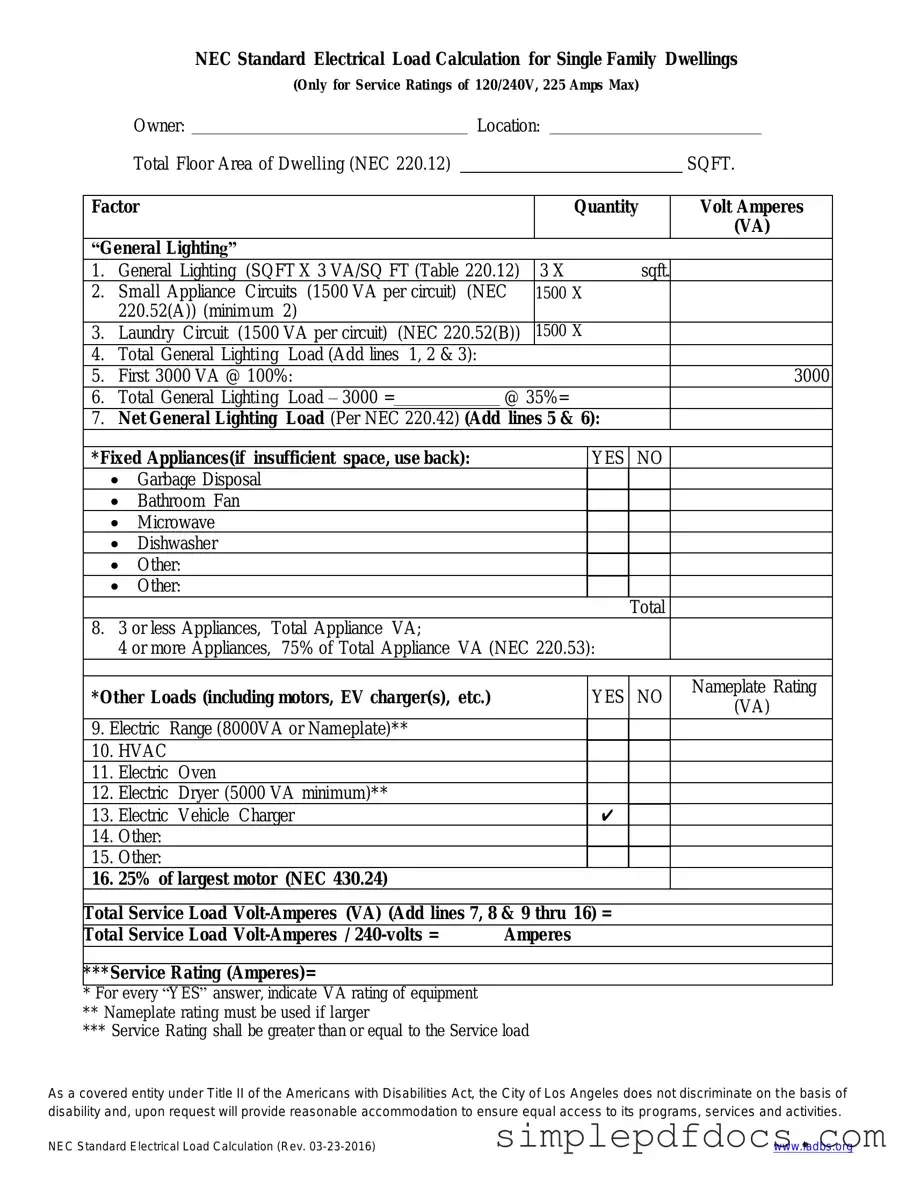The LADBS NEC Standard Electrical Load Calculation form plays a crucial role in ensuring that electrical systems are designed and installed safely and efficiently. This form provides a structured approach to calculating the expected electrical load of a building or facility, which is essential for compliance with the National Electrical Code (NEC). By detailing the various components that contribute to electrical load, such as lighting, receptacles, and equipment, the form helps professionals assess the total demand accurately. It also facilitates the determination of appropriate service sizes and panel ratings, which are vital for the safe operation of electrical systems. Users will find that the form includes sections for both residential and commercial applications, allowing for tailored calculations based on specific needs. Moreover, the LADBS encourages the use of this form to promote consistency and reliability in electrical installations across the region. Ultimately, understanding and utilizing this form can significantly enhance safety and performance in electrical system design.
